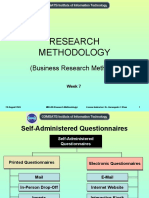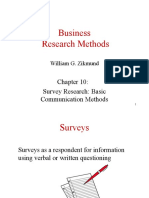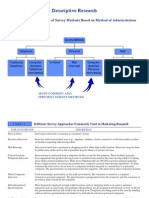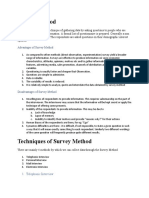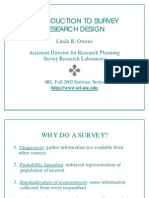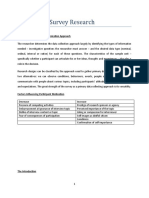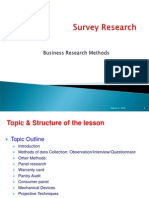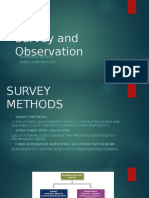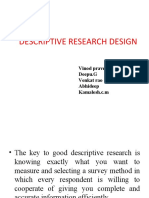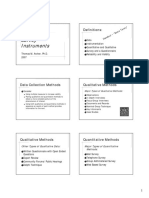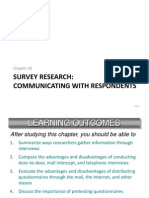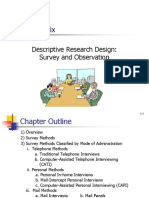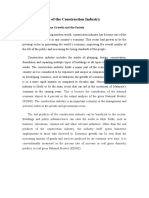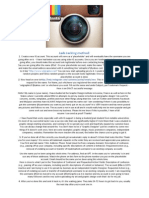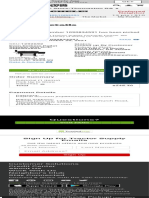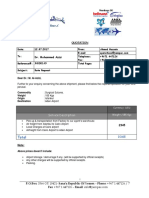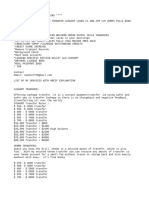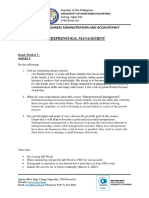0% found this document useful (0 votes)
62 views30 pagesCommunication Method
This document discusses survey research methods for communicating with respondents. It covers personal interviews, telephone interviews, and self-administered questionnaires. For personal interviews, it describes advantages like feedback and visual aids, and disadvantages like cost and interviewer influence. For telephone interviews, advantages include speed and cost, while disadvantages include unlisted numbers and easy hang-ups. Self-administered questionnaires can be paper-based or electronic, with trade-offs around control, costs, and response rates.
Uploaded by
Misganaw GishenCopyright
© © All Rights Reserved
We take content rights seriously. If you suspect this is your content, claim it here.
Available Formats
Download as PPT, PDF, TXT or read online on Scribd
0% found this document useful (0 votes)
62 views30 pagesCommunication Method
This document discusses survey research methods for communicating with respondents. It covers personal interviews, telephone interviews, and self-administered questionnaires. For personal interviews, it describes advantages like feedback and visual aids, and disadvantages like cost and interviewer influence. For telephone interviews, advantages include speed and cost, while disadvantages include unlisted numbers and easy hang-ups. Self-administered questionnaires can be paper-based or electronic, with trade-offs around control, costs, and response rates.
Uploaded by
Misganaw GishenCopyright
© © All Rights Reserved
We take content rights seriously. If you suspect this is your content, claim it here.
Available Formats
Download as PPT, PDF, TXT or read online on Scribd
/ 30











